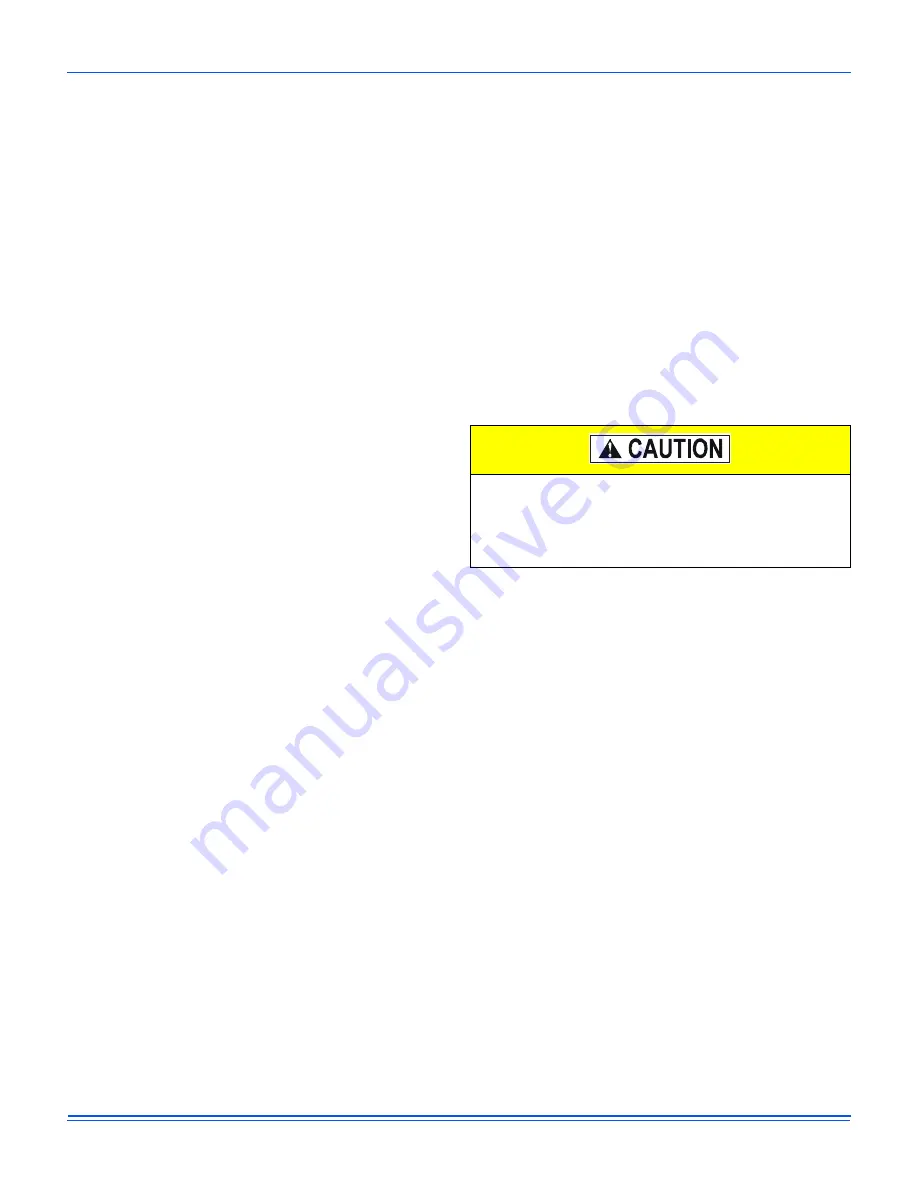
5566019-BIM-B-1118
Johnson Controls Ducted Systems
37
Motorized outdoor damper
The motorized outdoor damper can be a factory-installed option
or a field-installed accessory. If factory installed, refer to the
instructions included with the outdoor air hood to complete the
assembly. Field-installed motorized outdoor damper
accessories include complete instructions for installation.
Economizer
The economizer can be a factory-installed option or a field-
installed accessory. If factory installed, refer to the instructions
included with the economizer to complete the assembly. Field-
installed economizer accessories include complete instructions
for installation.
There are two economizer options:
1.
Down flow, end return horizontal applications that include a
fresh air hood and exhaust hood with barometric relief.
2.
Horizontal flow application (field-installed kit only) that
requires the purchase of a barometric relief hood.
Note:
For the down flow, end return horizontal application,
you must keep the two side panels for the economizer
hood tops (See Figure 20).
Power exhaust
The power exhaust can be a factory installed-option or a field-
installed accessory. If factory installed, refer to the instructions
included with the power exhaust to complete the assembly.
Field-installed power exhaust accessories include complete
instructions for installation.
The power exhaust factory-installed option is for down flow
application only.
There are two field-installed power exhaust accessories:
1.
Down flow application.
2.
Horizontal flow application that requires the purchase of a
barometric relief hood.
Rain hood
For factory-installed options, all of the hood components,
including the filters, the gasketing, and the hardware for
assembling, are packaged and located between the condenser
coil section and the main unit cabinet. For field-installed
accessories, all parts necessary for the installation come in the
accessory kit.
Optional variable air volume
A variable air volume (VAV) option using a variable frequency
drive (VFD) is available for applications that require a constant
supply-duct static pressure. A differential pressure transducer is
used to monitor supply duct static pressure and return a speed
reference signal to the VFD to control the output of the indoor
blower motor.
Duct static pressure transducer
A 0-5 in. WC pressure transducer, located in the control box
compartment, is used to sense static (gauge) pressure in the
supply air duct and convert this pressure measurement to a
proportional 0-5 VDC electrical output. Pressure-transmitting
plastic tubing (1/4 in. diameter) must be field supplied and
installed from the transducer to both the ductwork and to the
atmosphere.
Connect the tubing from the HIGH pressure tap of the
transducer to a static pressure tap (field supplied) in the supply
duct located at a point where constant pressure is expected. To
prevent an unstable signal due to air turbulence, make sure that
there are no obstructions, turns or VAV terminal boxes up- or
down-stream of the sensing tube location for at least a distance
of 6-10 times the duct diameter. Tubing must also be run
between the LOW pressure tap of the transducer and
atmospheric pressure (outside of the unit).
Factory-installed VFD
The factory-installed VFD is mounted in the blower access
compartment. The drive comes wired from the factory to include
both 3-phase power and control connections (run permit signal,
speed reference signal, and fault signal). All required drive
parameters are pre-programmed at the factory, except in the
case of 208-volt applications.
For 208-volt applications, you must change the following
parameters.
• Change the parameter that defines the motor nameplate
voltage to a value of 208.00
• Change th parameter that defines motor-rated current to
the appropriate value available on the motor's nameplate.
Refer to the enclosed drive material for instructions on
changing parameter settings.
For units also equipped with gas/electric heat, a terminal block
located in the unit's control box and connected to the VAV
board's VAV BOX terminal, must be field wired to the building's
VAV boxes to ensure fully open dampers during heating
operation.
Manual bypass
An optional, factory-installed manual bypass switch is available
with factory-installed VFD. The manual bypass switch is located
in the blower motor access compartment. The manual bypass
has the following three positions:
Do not run plastic tubing in the supply or return air ducts
as air movement could cause erroneous pressure
measurements. If the tubing penetrates through the
bottom of the unit, be sure openings are sealed to
prevent air and water leakage.
















































